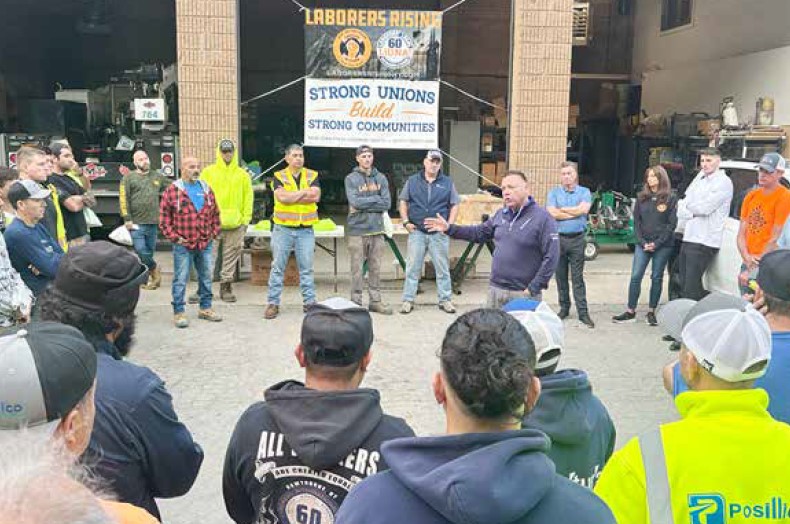Contractors, Unions Boost Awareness Of Industry’s Problems, Suicide Rates
ALBANY—As National Suicide Prevention Month continues through September, experts are urging companies to cultivate a stronger “culture of care” to support their crews and staffers. The week of Sept. 9 thru Sept. 13 was marked as Construction Suicide Prevention Week, noted Frank Marchese, Jr., who works on the front line of the crisis with the New York State Laborers’ Health and Safety Fund.
“NYS Laborers’ Health and Safety Fund last year launched a campaign called ‘Hope Lives’ to raise mental health awareness amongst our members and signatory union contractors,” Mr. Marchese explained. “‘Hope Lives’ advances understanding of the crisis through a campaign that employs job site posters, hard hat stickers, wearables and our very popular coffee cups. These materials all include a QR code that directs our members to the numerous resources available to them on a local, state and national level.”
The rate of death by suicide for construction workers is 5.5 times the rate of all other construction fatalities on the jobsite, and the rate of suicide in construction is more than four times higher than the general population, according to the Bureau of Labor Statistics in Washington. With more than 8 million (and rising) workers in the industry, it is critical that the construction and building industries place as much focus on mental health in the workforce as much as is done to physically protect workers.
Earlier this month, the industry raised attention of the issue to workers on jobsites across the country in observance of the crisis. The nature of the high-stress work and cultural factors contribute to construction’s high suicide risk, experts say, and support groups and industry leaders are increasingly trying to curb the issue.
“We definitely see construction workers are overrepresented in overdose and suicide fatalities,” said a spokesperson for the Center for Construction Research and Training — CPWR, during a webinar last week.


The suicide death rate for construction workers was 2.4 times higher than all industries (46.1 vs. 19.5 per 100,000 full time employees) in 2022, and there were five times more suicides in construction than at-work fatalities that year, the most recently available set of data.
“The construction industry just comes with its own distinct risk factors that can contribute to suicide death,” said Jessica Bunting, research to practice director at CPWR, during the webinar, which also featured speakers from The Construction Industry Alliance for Suicide Prevention and the American Foundation for Suicide Prevention.
Factors that contribute to suicide risk in construction include extreme pressure to work quickly with a low margin for error, a male-dominated demographic that creates a “tough-guy” mentality, alcohol and drug use, poor access and utilization of healthcare, job instability or uncertainty and high injury rates that lead to chronic pain.
Those issues can often compound as workers feel like they need to keep working to support their families, they don’t prioritize their physical or mental health.
“Throughout the construction industry, workers often must work through illness and through injury because they don’t get paid unless they work,” Mr. Marchese added. “This puts enormous pressure on them both mentally and physically.”
Suicide isn’t the only troubling factor. Reliance on painkillers or other substance abuse is high in construction. Over 17 times as many construction workers died from overdoses in 2022 than from jobsite fatalities, according to reports.
Some of the ways the construction industry is counteracting the crisis include: offering leadership training, setting up injury management seminars, improving return-towork programs, offering paid leave, being more flexible with expectations, and creating peersupport programs.
Mr. Marchese also added, “If you or someone you know is struggling or in crisis, call or text 988, help is available 24/7/365.”
For more information and ways to make positive changes in mental health in workplaces and on jobsites, visit www. constructionsuicideprevention.com
